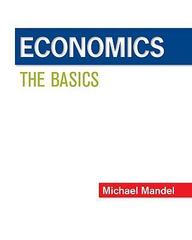Three students have each saved $1,000. Each has an investment opportunity in which he or she can invest up to $2,000. Here are the rates of return on the students' investment projects:
Three students have each saved $1,000. Each has an investment opportunity in which he or she can invest up to $2,000. Here are the rates of return on the students' investment projects: Return Student (Percent) Alex 4 Clancy Eileen 15Assume borrowing and lending is prohibited, so each student uses only personal saving to finance his or her own investment project. Complete the following table with how much each student will have a year later when the project pays its return. Money a Year Later Student (Dollars) Alex Clancy EileenNow suppose their school opens up a market for loanable funds in which students can borrow and lend among themselves at an interest rate r. If a student's expected rate of return is less than r, he or she would choose to borrow Suppose the interest rate is 6 percent. lend Among these three students, the quantity of loanable funds supplied would be and quantity demanded would be $ Now suppose the interest rate is 12 percent. Among these three students, the quantity of loanable funds supplied would be $ and quantity demanded would be $ At an interest rate of % , the loanable funds market among these three students would be in equilibrium. At this interest rate, would want to borrow, and would want to lend. Suppose the interest rate is at the equilibrium rate.Now suppose their school opens up a market for loanable funds in which students can borrow and lend among themselves at an interest rate I". If a student's expected rate of return is less than I", he or she would choose to V . Suppose the interest rate is 6 percent. Among these three students, the quantity of loanable funds supplied would be , and quantity demanded would be . Now suppose the interest rate is 12 percent. Among these three students, the quantity of loanable funds supplied would be , and quantity demanded would be . At an interest rate of , the loanable funds market among these three students would be in equilibrium. At this interest rate, V would want to borrow, and V would want to lend. Suppose the interest rate is at the equilibrium rate. Now suppose their school opens up a market for loanable funds in which students can borrow and lend among themselves at an interest rate r. If a student's expected rate of return is less than I", he or she would choose to V . Suppose the interest rate is 6 percent. Among these three students, the quantity of loanable funds supplied would be , and quantity demanded would be . Now suppose the interest rate is 12 percent. Among these three students, the quantity of loanable funds supplied would be , and quantity demanded would be . At an interest rate of , the loanable funds market among these three students would be in equilibrium. At this interest rate, V would want to borrow, and V would want to lend. ' Clancy and Eileen rate is at the equilibrium rate. Alex and Clancyr '9 table Moll how much each student will he ve a year later alter the investment projects pay tlielr return and loans have been Now suppose their school opens up a market for loanable funds in which students can borrow and lend among themselves at an interest rate r. If a student's expected rate of return is less than 1", he or she would choose to V . Suppose the interest rate is 6 percent. Among these three students, the quantity of loanable funds supplied would be , and quantity demanded would be . Now suppose the interest rate is 12 percent. Among these three students, the quantity of loanable funds supplied would be , and quantity demanded would be . At an interest rate of , the loanable funds market among these three students would be in equilibrium. At this interest rate, V would want to borrow, and V would want to lend. Suppose the interest rate is at the equilibrium rate. Alex and Clanc Compiete the following table wid] how much each s iater after the investment projects pay their return and ioans have been repaid. Clancyr and Eileen Complete the following table with how much each student will have a year later after the investment projects pay their return and loans have been repaid. Money a Year Later Student (Dollars) Alex Clancy Eileen True or False: Both borrowers and lenders are made better off. O True O False













